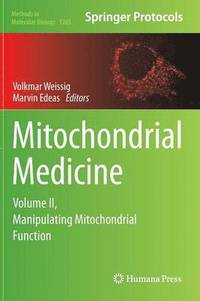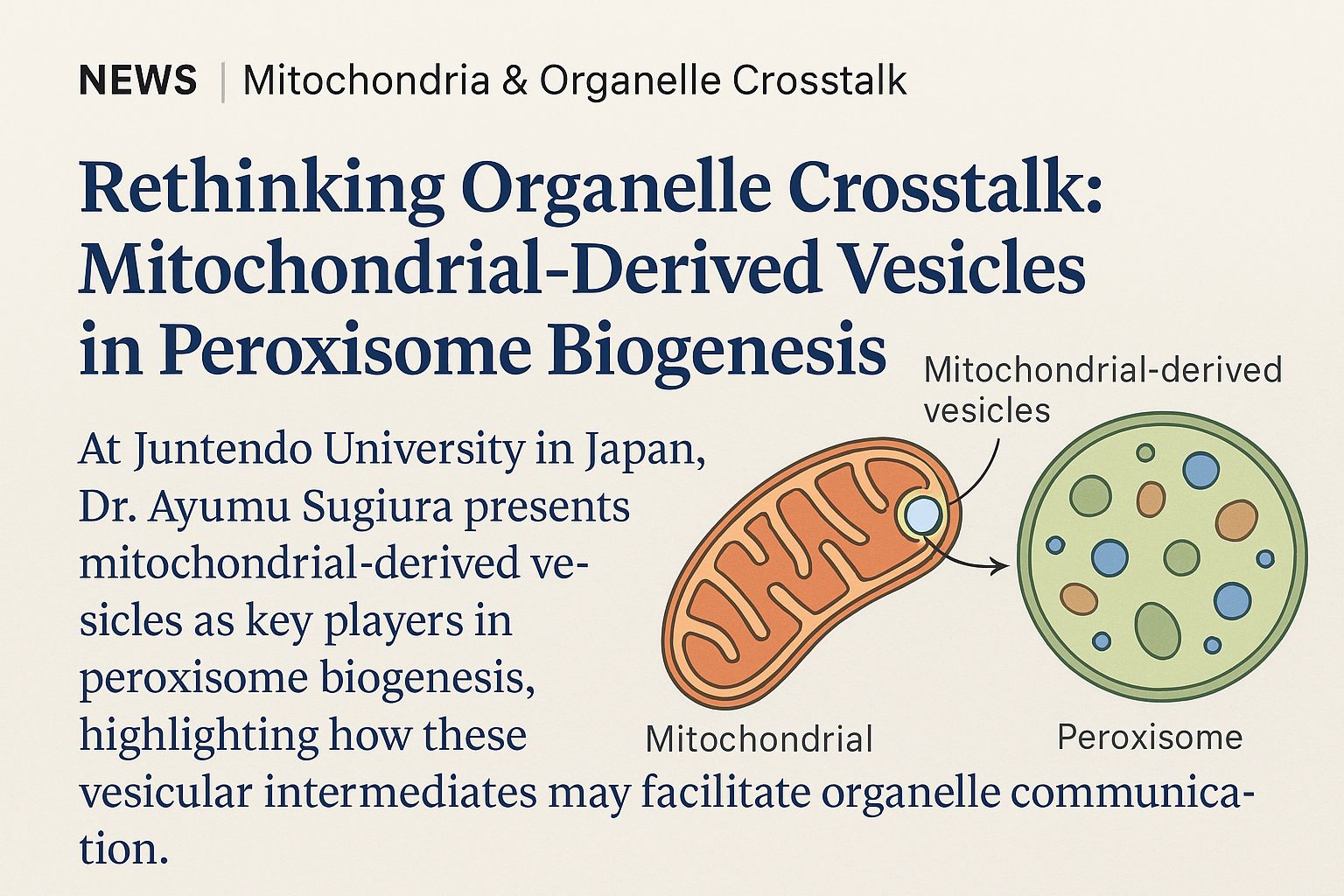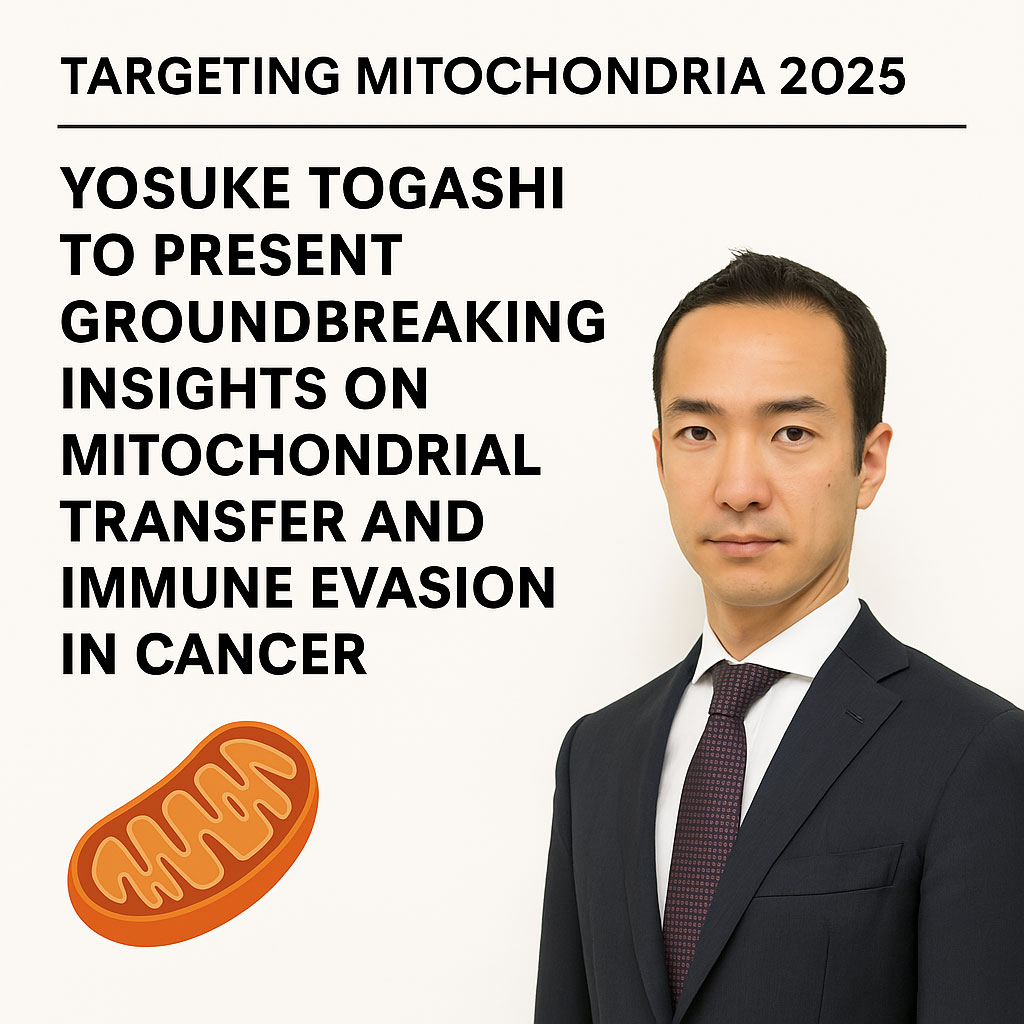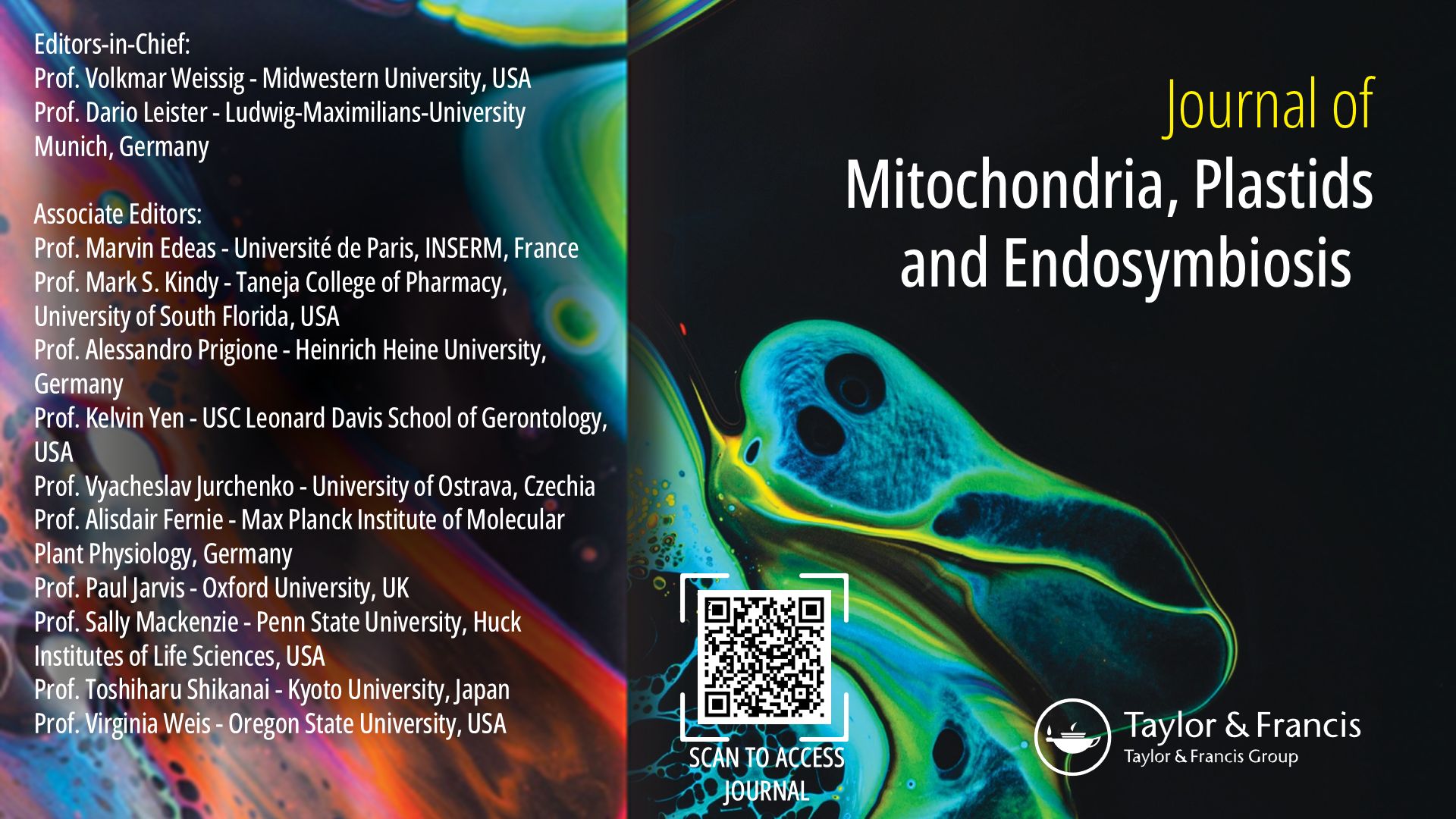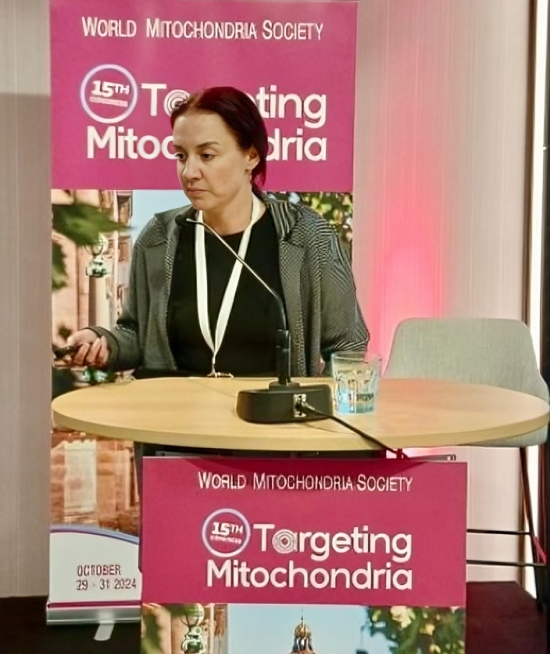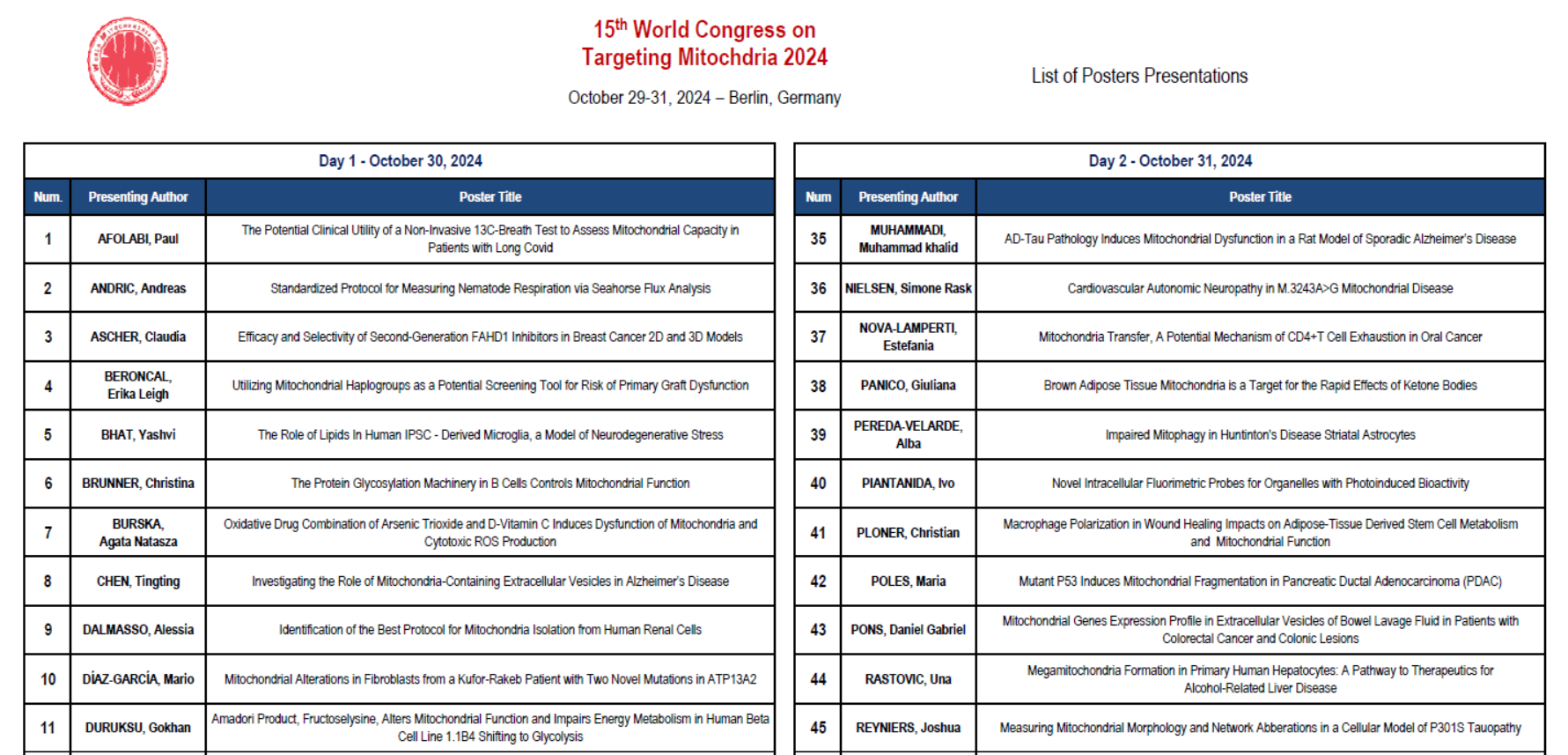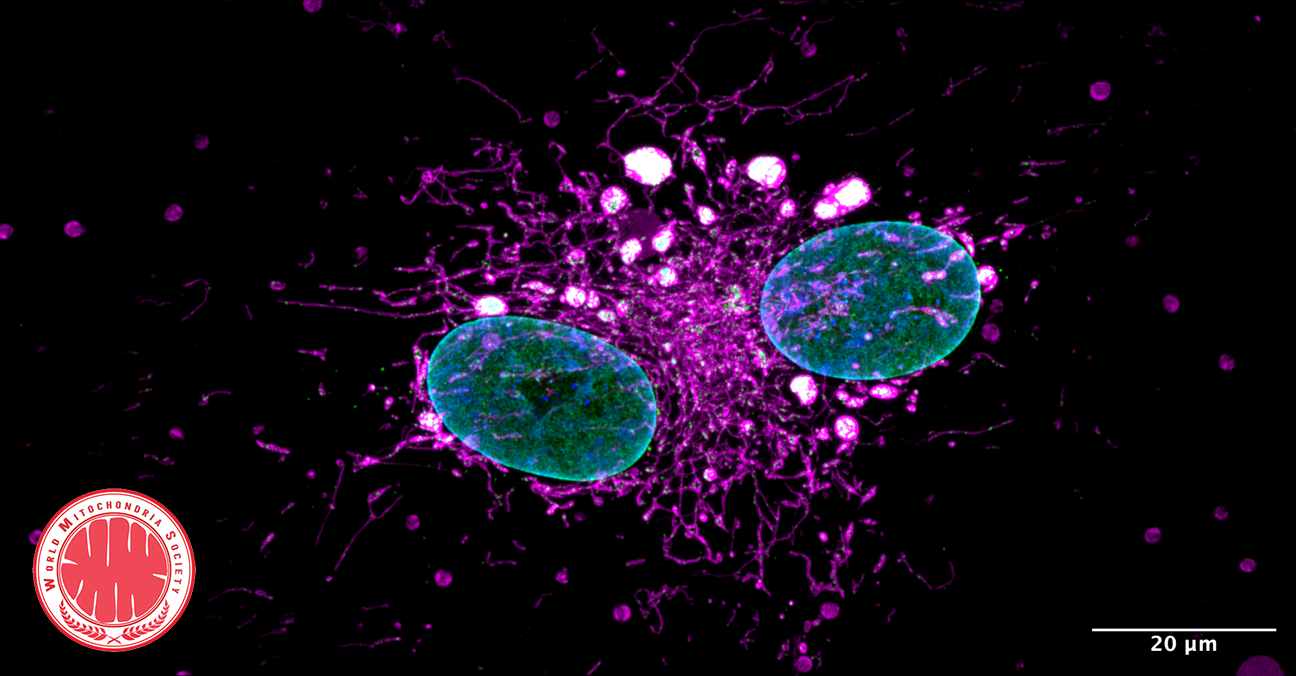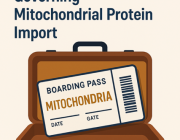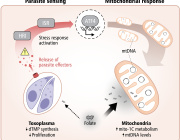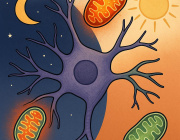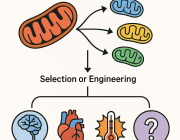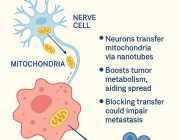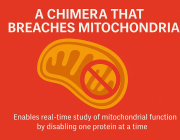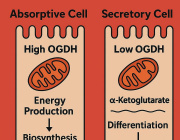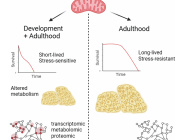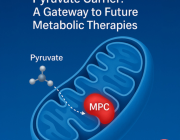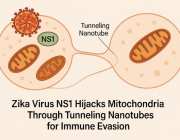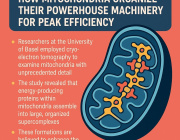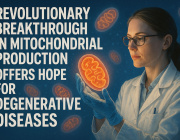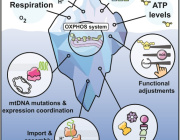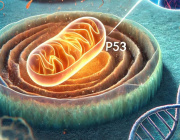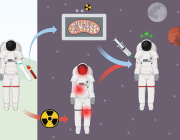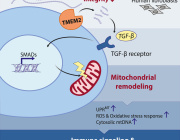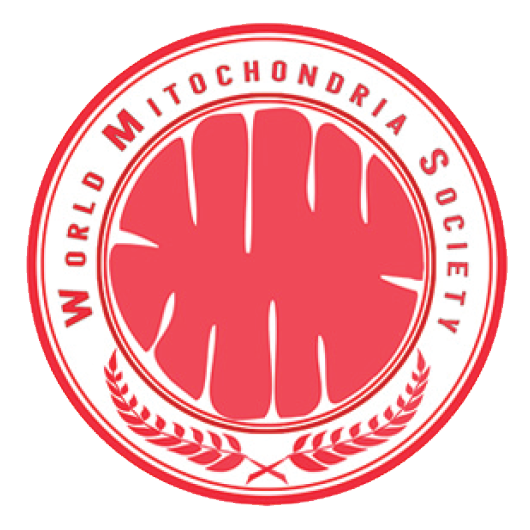Neuroscientists identify a small molecule that restores visual function after optic nerve injury
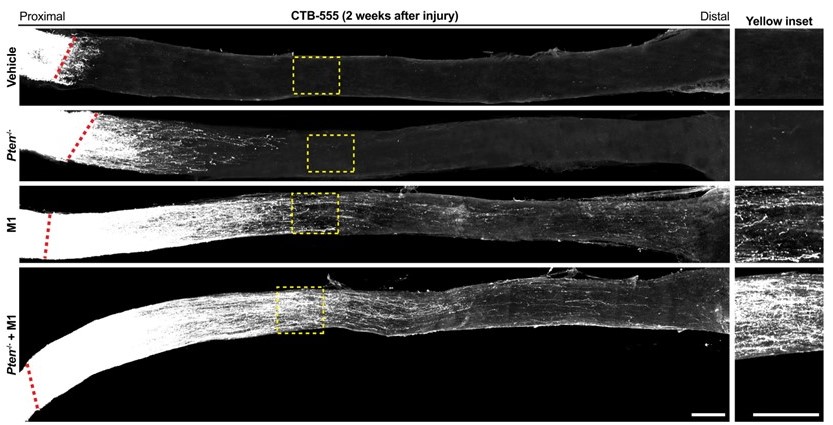
Intravitreal injection of M1 induces robust axon regeneration 2 wk after ONC.
News Release, World Mitochondria Society, Berlin - Germany – January 30, 2023
Traumatic injury to the brain, spinal cord and optic nerve in the central nervous system (CNS) are the leading cause of disability and the second leading cause of death worldwide. CNS injuries often result in a catastrophic loss of sensory, motor and visual functions, which is the most challenging problem faced by clinicians and research scientists. Neuroscientists have recently identified and demonstrated a small molecule that can effectively stimulate nerve regeneration and restore visual functions after optic nerve injury, offering great hope for patients with optic nerve injury, such as glaucoma-related vision loss.
"There is currently no effective treatment available for traumatic injuries to the CNS, so there is an immediate need for potential drug to promote CNS repair and ultimately achieve full function recovery, such as visual function, in patients," said Dr Eddie Ma Chi-him, Associate Head and Associate Professor in the Department of Neuroscience and Director of the Laboratory Animal Research Unit at CityU, who led the research.
Enhancing mitochondrial dynamics and motility is key for successful axon regeneration
Axons, which are a cable-like structure that extends from neurons (nerve cells), are responsible for transmitting signals between neurons and from the brain to muscles and glands. The first step for successful axon regeneration is to form active growth cones and the activation of a regrowth programme, involving the synthesis and transport of materials to regrow axons. These are all energy-demanding processes, which require the active transport of mitochondria (the powerhouse of the cell) to injured axons at the distal end.
Injured neurons therefore face special challenges that require long-distance transport of mitochondria from the soma (cell body) to distal regenerating axons, where axonal mitochondria in adults are mostly stationary and local energy consumption is critical for axon regeneration.
A research team led by Dr Ma identified a therapeutic small molecule, M1, which can increase the fusion and motility of mitochondria, resulting in sustained, long-distance axon regeneration. Regenerated axons elicited neural activities in target brain regions and restored visual functions within four to six weeks after optic nerve injury in M1-treated mice.
Small molecule M1 promotes mitochondrial dynamics and sustains long-distance axon regeneration
"Photoreceptors in the eyes [retina] forward visual information to neurons in the retina. To facilitate the recovery of visual function after injury, the axons of the neurons must regenerate through the optic nerve and relay nerve impulses to visual targets in the brain via the optic nerve for image processing and formation," explained Dr Ma.
To investigate whether M1 could promote long-distance axon regeneration after CNS injuries, the research team assessed the extent of axon regeneration in M1-treated mice four weeks after injury. Strikingly, most of the regenerating axons of M1-treated mice reached 4mm distal to the crush site (i.e. near optic chiasm), while no regenerating axons were found in vehicle-treated control mice. In M1-treated mice, the survival of retinal ganglion cells (RGCs, neurons that transmit visual stimuli from the eye to the brain) was significantly increased from 19% to 33% four weeks after optic nerve injury.
"This indicates that the M1 treatment sustains long-distance axon regeneration from the optic chiasm, i.e. midway between the eyes and target brain region, to multiple subcortical visual targets in the brain. Regenerated axons elicit neural activities in target brain regions and restore visual functions after M1 treatment," Dr Ma added.
M1 treatment restores visual function
To further explore whether M1 treatment can restore visual function, the research team gave the M1-treated mice a pupillary light reflex test six weeks after the optic nerve injury. They found that the lesioned eyes of M1-treated mice restored the pupil constriction response upon blue light illumination to a level similar to that of non-lesioned eyes, suggesting that M1 treatment can restore the pupil constriction response after optic nerve injuries.
In addition, the research team assessed the response of the mice to a looming stimulus -- a visually induced innate defensive response to avoid predators. The mice were placed into an open chamber with a triangular prism-shaped shelter and a rapidly expanding overhead-black circle as a looming stimulus, and their freeze and escape behaviours were observed. Half of the M1-treated mice responded to the stimulus by hiding in a shelter, showing that M1 induced robust axon regeneration to reinnervate subcortical visual target brain regions for complete recovery of their visual function.
Potential clinical application of M1 for repairing nervous system injury
The seven-year-long study highlights the potential of a readily available, non-viral therapy for CNS repair, which builds on the team's previous research on peripheral nerve regeneration using gene therapy.
"This time we used the small molecule, M1, to repair the CNS simply by intravitreal injection into the eyes, which is an established medical procedure for patients, e.g. for macular degeneration treatment. Successful restoration of visual functions, such as pupillary light reflex and response to looming visual stimuli was observed in M1-treated mice four to six weeks after the optic nerve had been damaged," said Dr Au Ngan-pan, Research Associate in the Department of Neuroscience.
The team is also developing an animal model for treating glaucoma-related vision loss using M1 and possibly other common eye diseases and vision impairments such as diabetes-related retinopathy, macular degeneration and traumatic optic neuropathy. Thus, further investigation is warranted to evaluate the potential clinical application of M1. "This research breakthrough heralds a new approach that could address unmet medical needs in accelerating functional recovery within a limited therapeutic time window after CNS injuries," said Dr Ma.
Image credit: © Ngan Pan Bennett Au et all, Journal PNASTargeting Mitochondria 2023 Conference will elaborate on the latest research concerning mitochondria and vision.
Media contact:
World Mitochondria Society
This email address is being protected from spambots. You need JavaScript enabled to view it.
+33-1-5504-7755
Targeting Mitochondria 2023 Congress
October 11-13, 2023 - Berlin, Germany
wms-site.com
Mitochondrial Dysfunction in Cell Senescence and Aging
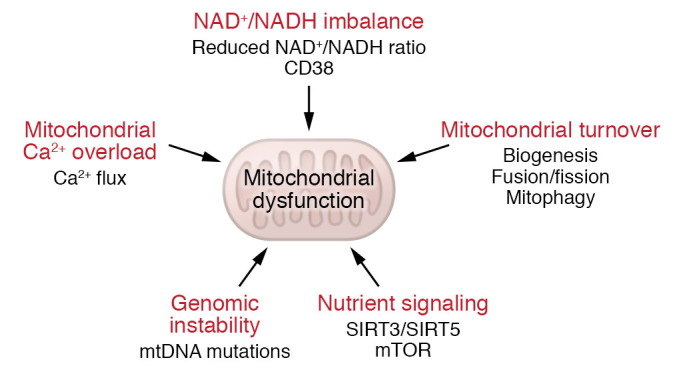
Mechanisms that can cause mitochondrial dysfunction.
News Release, World Mitochondria Society, Berlin - Germany – January 30, 2023
Mitochondrial dysfunction and cell senescence are hallmarks of aging and are closely interconnected. Mitochondrial dysfunction, operationally defined as a decreased respiratory capacity per mitochondrion together with a decreased mitochondrial membrane potential, typically accompanied by increased production of oxygen free radicals, is a cause and a consequence of cellular senescence and figures prominently in multiple feedback loops that induce and maintain the senescent phenotype.
Here, Miwa et al. summarized pathways that cause mitochondrial dysfunction in senescence and aging and discussed the major consequences of mitochondrial dysfunction and how these consequences contribute to senescence and aging. They also highlighted the potential of senescence-associated mitochondrial dysfunction as an antiaging and antisenescence intervention target, proposing the combination of multiple interventions converging onto mitochondrial dysfunction as novel, potent senolytics.
© Image - Miwa et al., J Clin Invest. 2022 Jul.
Targeting Mitochondria 2023 will dedicate a whole session to mitochondria & longevity. Access Sessions 2023.
Media contact:
World Mitochondria Society
This email address is being protected from spambots. You need JavaScript enabled to view it.
+33-1-5504-7755
Targeting Mitochondria 2023 Congress
October 11-13, 2023 - Berlin, Germany
wms-site.com
Researchers Tailor Blood Pressure Drug Delivery Directly to Cells’ ‘Power Plants’
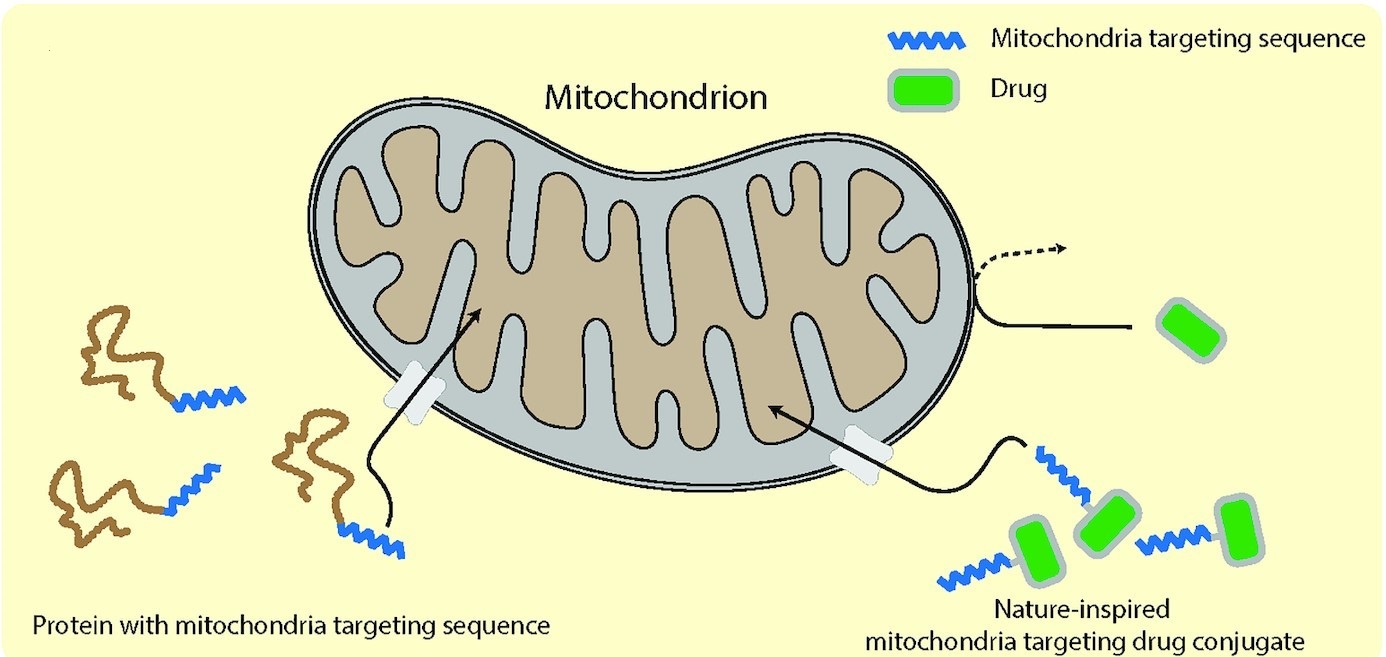
Schematic illustration of the design, synthesis, and mechanism of uptake of the mitochondrially targeted Losartan.
News Release, World Mitochondria Society, Berlin - Germany – September 6, 2022
In a study using lab-grown cells, Johns Hopkins Medicine researchers specializing in aging report they have successfully delivered a common blood pressure drug directly to the inner membrane of mitochondria, the "power plants" in the cells of humans, animals, plants and most other organisms.
Developing ways to directly target these energy-producing parts of the cell for delivery of drugs has long been a goal for researchers because mitochondria drive, control or play a role in almost every biological process, including natural cell death and aging. Alterations or declines in mitochondrial activity and pathways are closely aligned with decreased organ function and frailty. But because of the mitochondria's double-membrane structure, scientists have found it challenging to get drug molecules to penetrate the inner membrane and gain access to the core functions of the organelles.
The new study, described in the Aug. 4 issue of PNAS nexus, reports on a method that essentially hijacks a system already used by mitochondria to transport oxygen and other chemicals to the inner membrane.
For the study, the researchers lab-synthesized three naturally occurring transport proteins that interact with mitochondria. They then fused a commonly prescribed blood pressure medication (losartan) to each of these three proteins to determine which had the highest success rate penetrating the inner membrane of the mitochondria. These fused proteins, dubbed mtLOS1, mtLOS2 and mtLOS3, when introduced to lab-grown cells in separate trials, were able to transport the drug directly to the mitochondria at a significantly higher concentration than was possible with free losartan not fused to the transport protein. This could be seen under a microscope using florescence.
In a proof of concept experiment, the researchers also tested a "scrambled" version of mtLOS, which was unable to penetrate the inner membrane.
Abadir says further research is needed, but the goal is to use mtLOS or other natural transport pathways to deliver medicines that directly and efficiently target the biochemical imbalances and losses linked to chronic inflammation and weakened organ function characteristic of aging and many disorders.
"We know people age in part because of mitochondrial decline, and scientists have been trying to get therapies directly into the organelle to counteract this decline for decades," says Abadir. "This is another attempt at delivering compounds using the body's natural systems, which may greatly reduce negative side effects both short and long term."
© Image - Phillip et al., PNAS Nexus, September 2022
This year's meeting will introduce you to the latest discoveries targeting mitochondria. Congress program.
Media contact:
World Mitochondria Society
This email address is being protected from spambots. You need JavaScript enabled to view it.
+33-1-5504-7755
Targeting Mitochondria 2022 Congress
October 26-28, 2022 - Berlin, Germany
wms-site.com
Mitochondria Transplant Therapy for Injured Skeletal Muscle
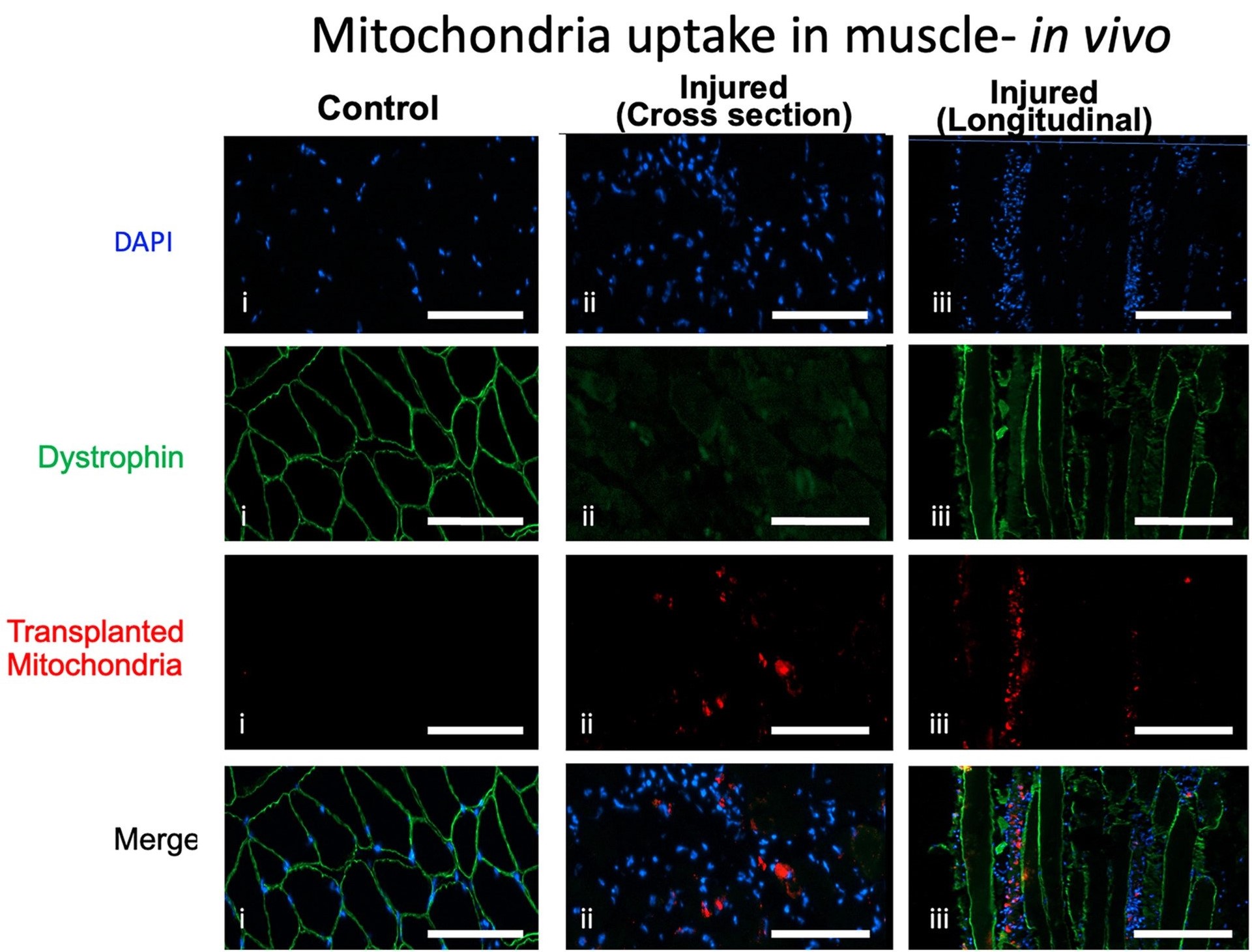
Uptake of donor mitochondria in myoblasts, myotubes and myofibres.
News Release, World Mitochondria Society, Berlin - Germany – January 12, 2023
- BaCl2 was injected into the gastrocnemius muscle of one limb of 8–12-week-old C57BL/6 mice to induce damage without injury to the resident stem cells.
- The contralateral gastrocnemius muscle was injected with phosphate-buffered saline (PBS) and served as the non-injured intra-animal control.
- Mitochondria were isolated from donor mice.
- Donor mitochondria were suspended in PBS or PBS without mitochondria (sham treatment) and injected into the tail vein of BaCl2 injured mice 24 h after the initial injury.
- Muscle repair was examined 7, 14 and 21 days after injury.
MTT did not increase systemic inflammation in mice. Muscle mass 7 days following injury was 21.9 ± 2.1% and 17.4 ± 1.9% lower (P < 0.05) in injured as compared with non-injured intra-animal control muscles in phosphate-buffered saline (PBS)- and MTT-treated animals, respectively.
Maximal plantar flexor muscle force was significantly lower in injured as compared with uninjured muscles of PBS-treated and MTT-treated mice, but the reduction in force was not different between the experimental groups. The percentage of collagen and other non-contractile tissue in histological muscle cross sections, was significantly greater in injured muscles of PBS-treated mice compared with MTT-treated mice 7 days after injury.
Muscle wet weight and maximal muscle force from injured MTT-treated mice had recovered to control levels by 14 days after the injury. However, muscle mass and force had not improved in PBS-treated animals by 14 days after injury.
By 21 days following injury, PBS-treated mice had fully restored gastrocnemius muscle mass of the injured muscle to that of the uninjured muscle, although maximal plantar flexion force was still lower in injured/repaired gastrocnemius as compared with uninjured intra-animal control muscles.
© Image - Alway et al., Journal of Cachexia, Sarcopenia and Muscle (2023)
Media contact:
World Mitochondria Society
This email address is being protected from spambots. You need JavaScript enabled to view it.
+33-1-5504-7755
Targeting Mitochondria 2023 Congress
October 11-13, 2023 - Berlin, Germany
wms-site.com
Mitochondria Targeted Near-Infrared Aggregation-Induced Emission for Photodynamic Ablation of Liver Cancer Cells

Multifunctional nano-photosensitizer was used for mitochondrial-targeting photodynamic ablation of liver cancer cells.
News Release, World Mitochondria Society, Berlin - Germany – September 6, 2022
The aggregation-induced emission photosensitizers (AIE-PSs) manifest a multitude of notable superiorities in terms of high specificity to organelles, high-efficient singlet oxygen (1O2) generation as well as enhanced fluorescence intensity, which provides a feasible approach to overcome the problems such as the insufficient generation of reactive oxygen species (ROS) caused by grave aggregation-induced quenching (ACQ) and the lack of specific targeting existing in traditional PSs, but extremely challenging.
Herein, a series of near-infrared (NIR) AIE luminogens (AIEgens) for targeting mitochondrial was devised and synthesized by regulating the D-A intensity assembly molecular engineering, which fabricating a progressively stronger intermolecular charge transfer (ICT) state to accelerate highly effective intersystem crossing (ISC) of excited electrons by the synergistic effect of thiophene and quinolinium.
- The optimal NIR AIE-PS (DTTVQ-OH) revealed excellent photostability, biocompatibility, precise mitochondria targeting, extremely high generation yield of 1O2 and superior phototoxicity in living HepG2 cells.
- Apoptosis assay and cell migration experiment further demonstrated that DTTVQ-OH could efficaciously restrain cell proliferation and induce/speed up cancer cell death.
- DTTVQ-OH could selectively distinguish cancer cells and normal cells by difference of fluorescence intensity in high resolution without the assist of any extra targeting ligands.
As a consequence, this work provides a rational and practicable strategy for the specific targeted molecular engineering of AIE-PSs, which gives impetus to the development of fluorescence imaging-guided photodynamic therapy fields.
© Image -Xue et al., Sensors and Actuators B: Chemical 2022
Targeting Mitochondria 2022 will dedicate a whole session to "Translational Therapies - Focus on Infrared Therapies". Submit a related abstract.
Media contact:
World Mitochondria Society
This email address is being protected from spambots. You need JavaScript enabled to view it.
+33-1-5504-7755
Targeting Mitochondria 2022 Congress
October 26-28, 2022 - Berlin, Germany
wms-site.com
More Articles...
- Selective Packaging of Mitochondrial Proteins into Extracellular Vesicles Prevents the Release of Mitochondrial DAMPs
- Transplantation of Astrocytic Mitochondria for Intracerebral Hemorrhage Treatment
- Researchers prove the potential of mitochondria-targeted chemotherapies
- Parkin in the Regulation of Myocardial Mitochondria-Associated Membranes and Cardiomyopathy During Endotoxemia






